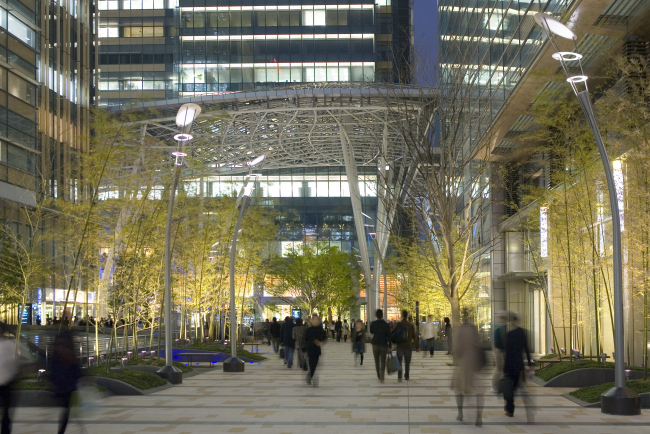What do Les Quatre Temps and Tokyo Midtown have in common?
First, they are shopping malls, with the former located in the La Defense district just west of Paris, and the latter in Japan’s capital.
Second, they are successful malls, even in the era of e-commerce. They have converged retail, entertainment, residences and hospitality inside one complex, allowing locals and tourists to quench their thirst for entertainment and relaxation.
Jose B. Alvarez, former president and CEO of supermarket chain Stop and Shop-Giant-Landover, respectively, argued in his book, “Retail Revolution: Will Your Brick-and-Mortar Store Survive,” that successful shopping malls today have specific characteristics.
“Some you see succeeding are experience-based malls, ones that have restaurants, movie theaters and other sources of entertainment or services,” he told Forbes magazine. “The other place where you are seeing malls thrive is at the high end. The luxury malls, what the industry calls A-class malls, are doing very, very well.”
First, they are shopping malls, with the former located in the La Defense district just west of Paris, and the latter in Japan’s capital.
Second, they are successful malls, even in the era of e-commerce. They have converged retail, entertainment, residences and hospitality inside one complex, allowing locals and tourists to quench their thirst for entertainment and relaxation.
Jose B. Alvarez, former president and CEO of supermarket chain Stop and Shop-Giant-Landover, respectively, argued in his book, “Retail Revolution: Will Your Brick-and-Mortar Store Survive,” that successful shopping malls today have specific characteristics.
“Some you see succeeding are experience-based malls, ones that have restaurants, movie theaters and other sources of entertainment or services,” he told Forbes magazine. “The other place where you are seeing malls thrive is at the high end. The luxury malls, what the industry calls A-class malls, are doing very, very well.”

The most popular example is Tokyo Midtown, situated on the main roads within the Roppongi District, which opened in 2007 on the former site of the Japanese Self-Defense Agency. The project consists of six buildings that include residential, retail, cultural spaces, offices, a museum and a five-star Ritz-Carlton hotel.
What is so special about the project is that 40 percent of the area’s 78,000 square meters is dedicated to public space, including a park and cherry blossom promenade. The public park and other open space offer lush greenery in Tokyo and have transformed the Roppongi district’s image from a nightlife destination to a chic area that caters to visitors and locals alike.
Meanwhile, Les Quatre Temps is a large shopping mall in La Defense, a major business district of Paris. In the fashion capital, a large shopping mall is a rare edifice as most Parisians prefer outdoor boutiques over an “everything under one roof” structure. For those wishing to stroll through familiar chains such as Apple or Zara all at once, it is the place to be.
In the U.S., the Mall of America is one of the largest shopping malls and has become a national tourist destination in its own right. Every year, 40 million visitors ― roughly eight times the population of the state of Minnesota, where it is located ― arrive at the lesser-known Midwestern city of Bloomington.
The mall houses over 500 chain shops and large department stores, and has billed itself as an entertainment landmark with the nation’s largest indoor theme park and an aquarium. The mall’s vast space of 452,000 square meters will be doubled, with the addition of a new high-end hotel, ice rink, water park, more office space and luxurious outlets.
Istanbul, a Turkish city where East meets West, boasts a new hub of shopping malls on the back of the country’s large, young and growing population. The city has the largest number of shopping malls in any major European or Asian city. Unlike many other countries that build mega malls outside the city, most in Istanbul are located at the city’s core ― along the busiest street ― making them a fundamental cultural asset for citizens.
Istanbul Cevahir is the largest mall in Europe under the 2,500 square meter glass roof. Mall-goers can stroll through more than 300 stores to shop, watch a movie, play games, go bowling, visit the aquarium or even enjoy a roller coaster ride.
By Ahn Sung-mi (sahn@heraldcorp.com)
-
Articles by Korea Herald










![[Hello India] Hyundai Motor vows to boost 'clean mobility' in India](http://res.heraldm.com/phpwas/restmb_idxmake.php?idx=644&simg=/content/image/2024/04/25/20240425050672_0.jpg&u=)








